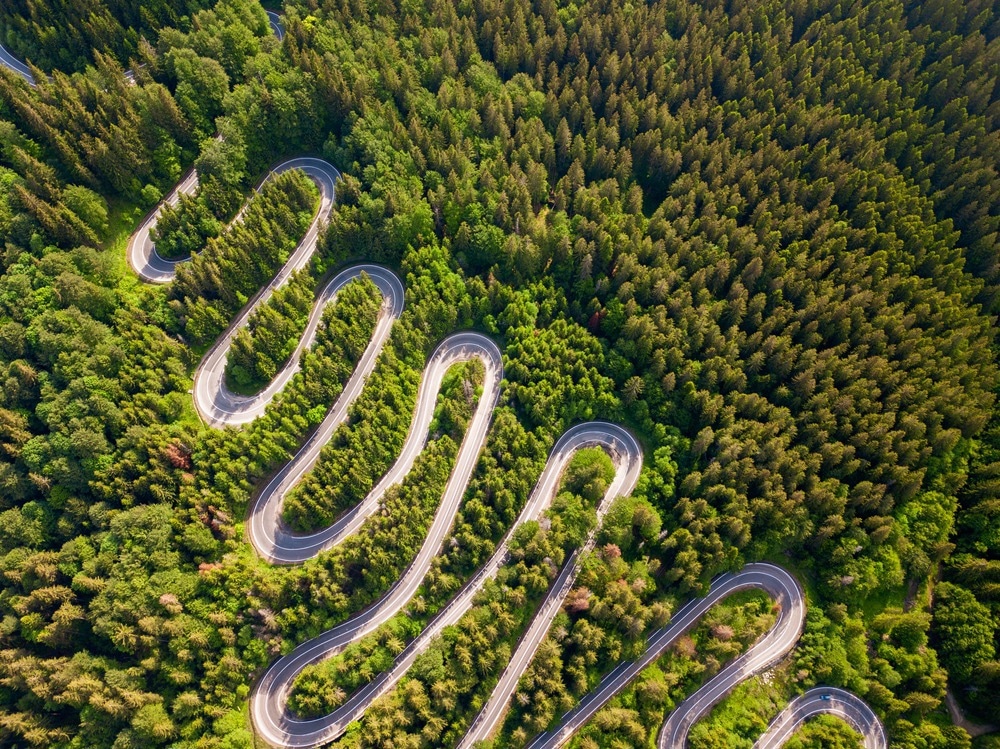Advancements in smartphones and associated optical equipment, such as iPhones with LiDAR sensors, enable laser scanning on road surfaces. A recent study published in Forests evaluates the accuracy of mobile LiDAR sensors in assessing forest wear damage and compares it to a hand-held mobile laser scanner.

Study: Forest Road Wearing Course Damage Assessment Possibilities with Different Types of Laser Scanning Methods Including New iPhone LiDAR Scanning Apps. Image Credit: Gheorghita Rafaila/Shutterstock.com
Importance of Regular Maintenance of Forest Roads
The Czech Republic has 34.1% of its land covered by forests. Its forest roads are almost as long as all other highways the state and its regions maintain. Roads are necessary for effectively managing forests and are identical to other roads in regulation.
Damage repairs of forest roads are often neglected due to low traffic volume and high design and construction costs. Effective maintenance of forest roads is essential to avoid damage repairs.
Rutting is one of the issues that arise throughout a forest road-wearing course. Ruts in the ground cause water to concentrate and form erosion rills.
Wearing course degrade over time if this water freezes. Forest roads need a tough, high-quality surface for safe and pleasurable driving, necessitating routine monitoring and maintenance.
Limitations of Tacheomatric Survey for Monitoring Forest Roads
Monitoring the cross-section of the road surface enables early damage repair, preventing more considerable future expenses. The geodetic terrestrial approach known as tacheometric surveying is currently utilized to assess the degree of damage to a forest road-wearing course. This procedure is accurate yet time-consuming. A faster technique for monitoring forest roads is required for effective maintenance.
Potential of Laser Surface Scanning for Monitoring Forest Roads
Accurate observations of the topography of forest roads surface are necessary for assessing wear course damage.
The recent research focuses on laser surface scanning for monitoring forest roads since it appears to have long-term promise.
Laser scanning techniques yield more accurate results and do not require targeting a considerable number of ground reference points compared to image processing techniques.
Limitations of Current Laser Surface Scanning Techniques
Large-scale laser scanning lacks adequate details despite efforts to improve it. Airborne laser scanning with unmanned aerial vehicles (UAVs) or drones has proven problematic in the case of forest stands.
The absence of point cloud density restricts the use of airborne laser scanning for mapping forest roads. Using UAVs in the Czech Republic also necessitates flight permission and pilot registration, both of which are issued by the civil aviation authority.
There are drawbacks associated with the legal constraints. This aspect and the possibility of a plane colliding with the canopy over the forest road make the process incredibly difficult.
Terrestrial static laser scanning has recently received attention for monitoring forest roads. Terrestrial static laser scanning is not affected by tree crowns. However, it lacks the field measurement technique for processing in terrain and is time-consuming.
Mobile LiDAR Technology for Monitoring Forest Roads
Hand-held personal laser scanning is a more useful data-collecting technique for detailed surveying. It is more practical, quicker, and better suited for real-time, accurate forest condition surveillance than terrestrial static and airborne laser scanning. Its use is more adaptable, cost-effective, and meets the present demand to assess forest roads.
Advances in mobile LiDAR technology allow novel capacities for hand-held personal laser scanning.
Mikita et al. evaluated mobile LiDAR technology for detecting the status of forest road surfaces, focusing on the iPhone 13 Pro with a new integrated LiDAR sensor. This system addresses the public’s rising need for high-quality images.
It is reasonable to assume that when smartphone makers consider this demand, specialized apps will be invaluable in the workplace.
The researchers scanned several small objects with specified dimensions to evaluate the LiDAR sensor's accuracy and precision. The researchers also evaluated the precision and suitability of various laser scanning technologies used for surface detection, emphasizing their suitability for assessing the technical state of forest roads.
Research Findings
In this study, the precision and accuracy of the iPhone 13 Pro with LiDAR technology and the currently available 3D Scanner and Polycam for assessing the degree of damage on forest road surfaces were evaluated.
The iPhone 13 Pro LiDAR enabled fast data collection and easy mapping and inspection of forest roads without relying on the GNSS signal. However, it fell short of the quality and accuracy required for professional use in the continuous acquisition of data along the length of the route.
The findings demonstrated that the LiDAR in the iPhone 13 Pro locally and accurately captured the surface of a forest road (in the cross-section of the forest road) up to 4 m.
The 3D Scanner app offered information about changes with an accuracy of 2 cm and recorded the current topography of the forest road cross profile with provided RMSE.
The 3D Scanner software recorded the topography of forest roads such as a terrestrial static laser scanner. This technique can aid forest managers in making decisions to fix the forest roads on their property, taking into account objective facts rather than their judgment.
Reference
Mikita, T., Krausková, D., Hrůza, P., Cibulka, M., & Patočka, Z. (2022) Forest Road Wearing Course Damage Assessment Possibilities with Different Types of Laser Scanning Methods Including New iPhone LiDAR Scanning Apps. Forests, 13(11), Article 11. https://www.mdpi.com/1999-4907/13/11/1763
Disclaimer: The views expressed here are those of the author expressed in their private capacity and do not necessarily represent the views of AZoM.com Limited T/A AZoNetwork the owner and operator of this website. This disclaimer forms part of the Terms and conditions of use of this website.